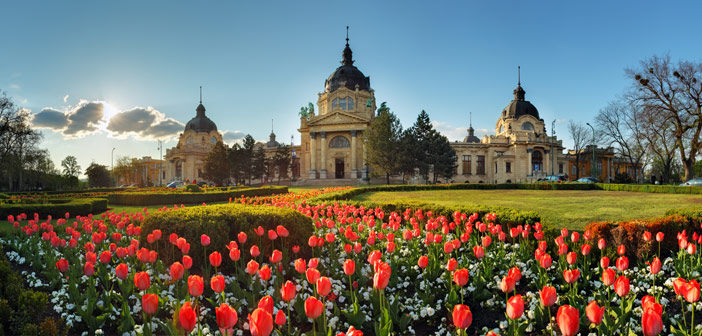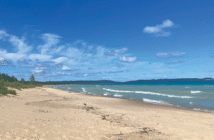When one ventures to Budapest, one really must visit the spa; which should be simple, as there are 18 of them, not to mention the various smaller, private baths lurking around the city. In all, there are 118 springs churning out 70 million liters of thermal water each day, at temperatures ranging from a cool 68°F to a broiling 172°F (ouch).
For an American, the Hungarian spa experience is a bit strange. In the States, a spa day generally entails strange, chocolate-inspired massage treatments and towels wrapped expertly around heads. Oh, and monogrammed bathrobes. This is not the spa experience of Budapest.
In fact, I was surprised to see how much the people of Budapest embrace the spa as part of their daily life. It’s not all ancient men huddled in a sauna, or rowdy children slapping their little feet on the tile as they run around the pool. Instead, a spa day in Budapest is a serious thing; men and women of all ages and body types gather in different baths throughout the spa for a soak. There are hot saunas, really hot saunas, hot baths, octagon-shaped hot baths, outdoor hot baths, cool baths, downright cold baths, and slowly freezing-to-death-after-the-Titanic-sank cold baths. Everyone is calm, speaking pleasantly in hushed tones, or not at all, and simply leaning back to enjoy their time in the thermal pools.
As an outsider, the strangest aspect was realizing that the spa is completely devoid of novelty for them. The people of Budapest are used to their baths, consider them an important aspect of their health, and make time to visit them. If there was body-shame due to billowing bosoms or bellies that were the result of, perhaps, a little too much chicken paprikash, it wasn’t noticeable. Like an exercise circuit, the bathers moved from one bath to another, and then to the sauna and quickly to the cold plunge – a slow, deliberate dance to which these people, in this culture, know all the steps.
The massages performed at the spa are a different affair, as well. To conceive of this difference, all one must do is think the words, “Hungarian Massage” and the correct mental picture of this service should fly into the mind: a merciless beating of muscles and rough rubbing of tender back-skin that somehow results in pure contentment and ultimate relaxation.
Of all the spas in Budapest, the most iconic is probably Szechenyi Baths, the first thermal bath on the Pest side, and one of the largest thermal baths in Europe. The lobby is all mosaics and statues from mythology, and just past the turnstile are personal changing cabins, over a dozen indoor baths of varying temperatures, saunas both wet and dry, and two large and glorious outdoor pools strewn with dancing nymphs and yet more scenes from mythology. It is a veritable pleasure palace, complete with a Palmahaz – a sunroom on the second floor for basically just lounging around drinking honey tea and eating fruit like a Roman emperor.
“City of Spas,” as Budapest is known, is a place where a lot of political strife, hardship, and terror took place under the Soviet regime. But, a trip to any number of the local spas, (and more than one spa should definitely be visited) shows not only the resilience of the city’s people, but the power of relaxation, of tradition, and a good warm (or cold) soak in a thermal tub.














